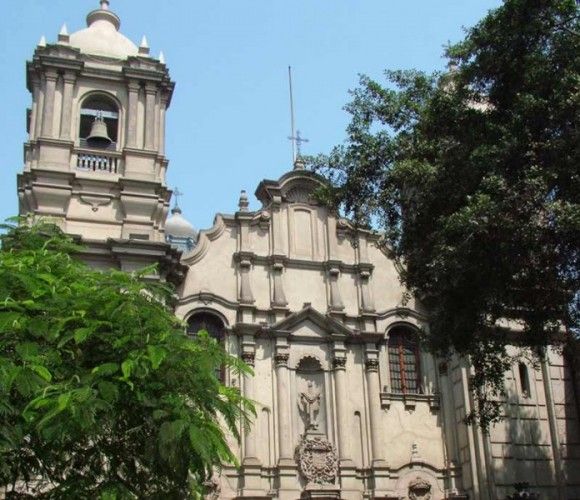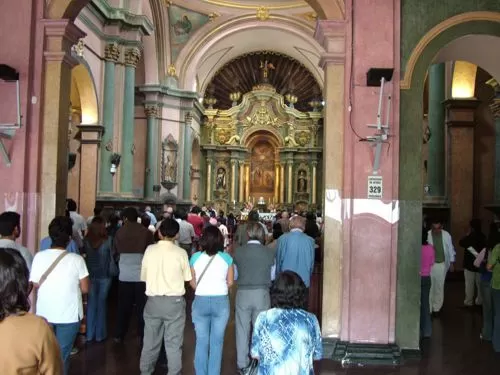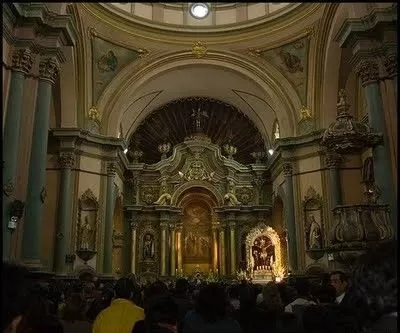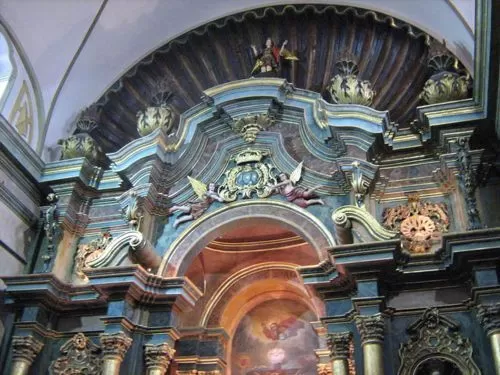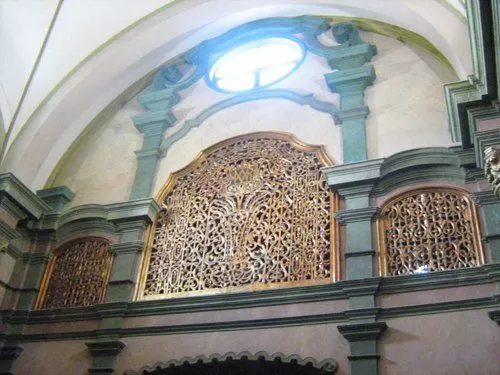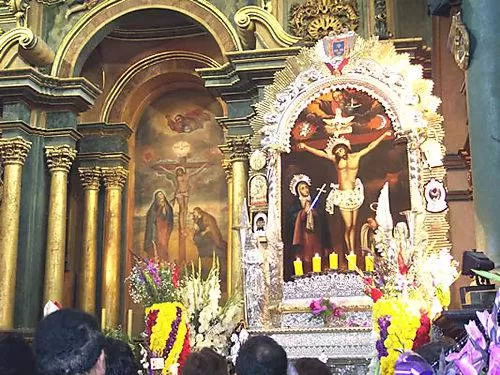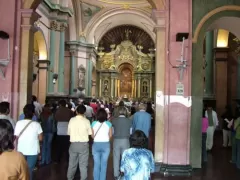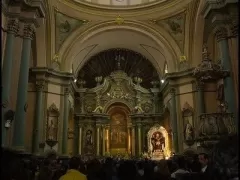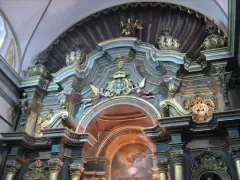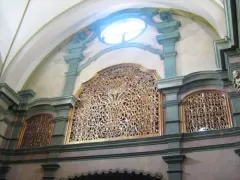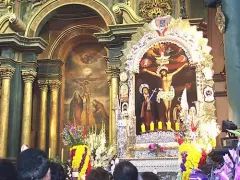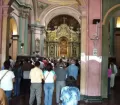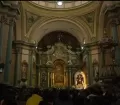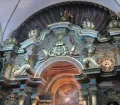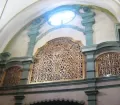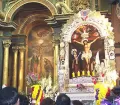Home to the Lord of Miracles (Señor de Milagros), the Church of the Nazarenas is a real architectural jewel built in rococo style. Built on the grounds of a Colonial ghetto called Pachacamilla inhabited by black slaves the church has a legendary history.
According to religious belief in 1651 an Angolan slave painted an image of Christ on a wall of one of the barracks in his neighborhood. As usual for Christianized Africans, a few slaves soon worshipped the painting by night, praying and bringing offerings. In 1655 a heavy earthquake struck Lima leaving the city lay in ashes. It is said that the only thing still standing was the wall where a few years earlier the Angolan slave had painted the Christ image. Since then the adoration grew steadily. Soon devotion for the Christ image annoyed the Viceroyalty. Despite all attempts to remove and paint over it, the image stayed intact.
In 1687 another earthquake hit Lima, once again destroying much of the colonial city center, including the chapel that had been built around the Christ image. But once again the one wall with the image remained untouched. A copy of the Christ image was made and carried around town soon after the tremor. The cult and adoration for the Lord of Miracles increased over the centuries.
Since the first procession each year in October faithful believers, mainly dressed in purple tunics, carry the 2 tons litter which bears a copy of the painting of the Lord of Miracles, on their shoulders from the Church Las Nazarenas to the Church "La Merced", singing hymns and praying. The traditional 24 hour procession attracts thousands of believers and today is carried out in other districts as well.
The Lord of Miracles was named patron saint of Lima in 1715 and still is believed to cure the sick and protect against tremors. In Lima October is considered to be the purple month following the color of nun's habit protecting the image. For the religious festivities of Señor de Milagros traditionally Turron is prepared, an extremely sweet and sticky treat.


